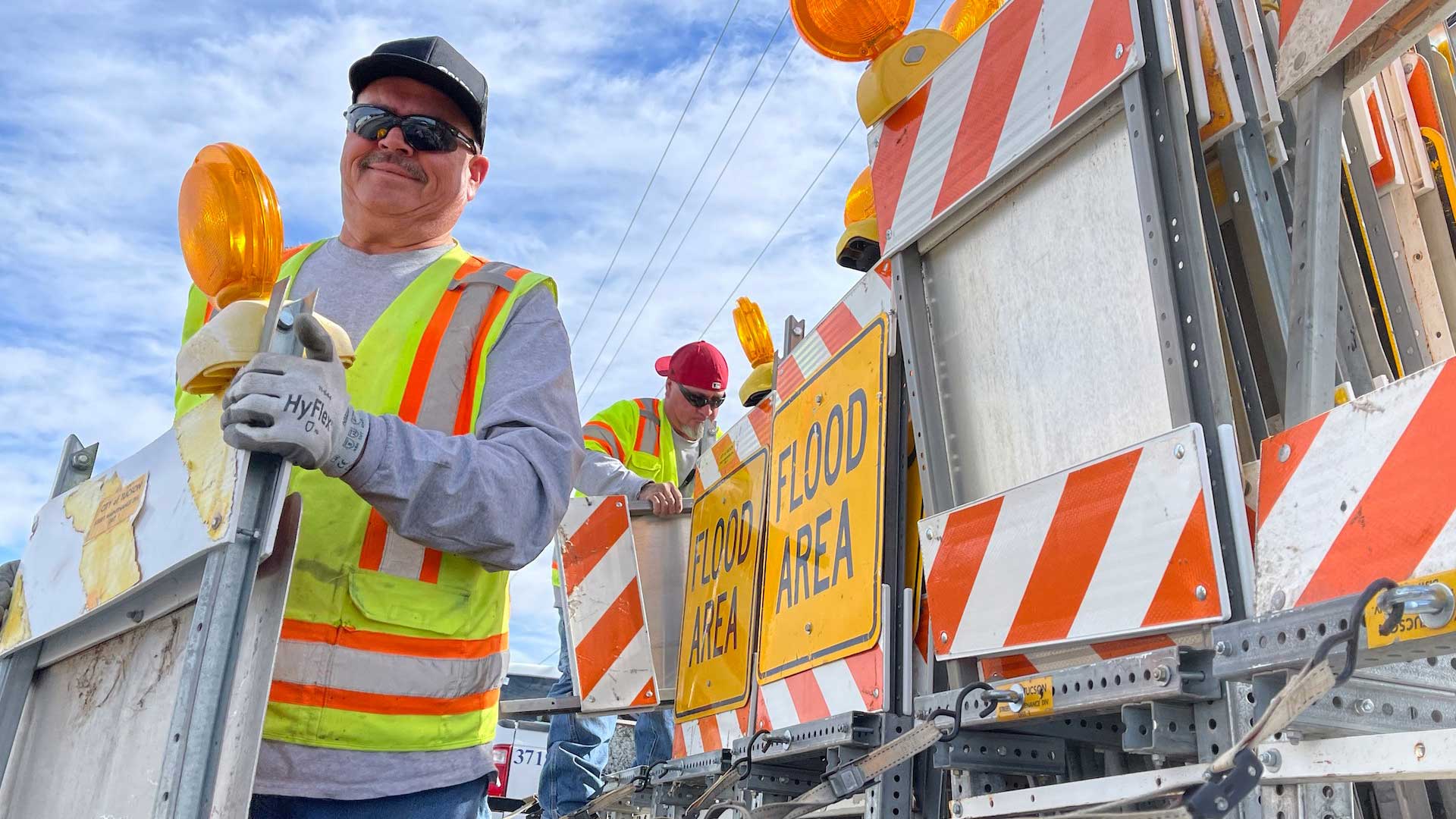 City crews are preparing barricades to direct motorists away from flooded roads.
City crews are preparing barricades to direct motorists away from flooded roads.
The monsoon brings mixed emotions to Tucsonans. For most people, it's about watching a big storm roll in to quench the thirsty desert.
But for Tucson Department of Transportation and Mobility's Erica Frazelle and others who work on Operation Splash, it can be a lot of work.
“That includes our staff being on call 24 hours a day, seven days a week, placing barricades at all of those dip crossings around the City of Tucson. We have 150 dip crossings. So, those are in place so crews can easily get those road-closed signs into place to help the traveling public from going into those flooded areas,” Frazelle said. “And we also provide sand as well so the public can keep their properties safe.”
According to data from the National Weather Service, the last monsoon had 50% less rain than previous years. NWS Meteorologist Julia Tetrault said we might not see a lot of rain but we'll get big amounts in small amounts of time. Like on June 28, when Tucson had nearly three-quarters of an inch of rain, or a week earlier when it had just under three inches of rain.
“This monsoon is definitely different from what we typically see. Typically we’ll start to see, little bit, by little bit, in terms of moisture, coming up from usually Mexico. But, this year it all kind of happened overnight. One day we had sky clear, beautiful blue skies and the next day it was like, bam, we’re here,” Tetrault said.
The moisture we saw then did come back.
“Basically we had two outflows combining together, initiating a thunderstorm development. And then it kind of just sat over us for a long period of time. And because we were so wet, the rainfall rates were just crazy high,” she said.
We saw that heavy rain again this past weekend, bringing the biggest hailstones this year, almost two inches of rain, and 80-MPH winds. The storm caused structures to collapse, and trees and powerlines to fall. Which left tens of thousands of Tucson Electric Power customers without power for multiple days.
That heavy rain also caused flooding on roads that have low spots. Frazelle said you should find an alternate route if you see flooding or a road-closed sign because water is powerful.
“Just 12 inches of water can take away a vehicle and just six inches of water can take someone who is on foot,” Frazelle said.
She said it can be hard to tell the condition of the roadways under the water because our roads don’t have many drainage systems. They were designed to carry water out into the washes.
But that’s changing with new road projects underway.
“So right now you see Grant Road under construction. That will have a major storm drain infrastructure,” Frazelle said. “A 90-inch diameter storm drain throughout the project limits that will divert that water. Take [it] from on top [to] underneath, to help the traveling public drive in those areas during those heavy storms.”
Until construction is done and flooding is decreased, Tetrault said it is important to stay cautious. In June, the Tucson Fire Department responded to a swift water rescue where a woman died.
“We do what we do every day to protect lives and property and enhance the national economy. So, I really hope to not see more deaths, especially with that. So if you happen to see any low-water crossings, those are there for a reason. Please turn around, don’t drown,” Tetrault said.
For residents worried about their property flooding, the city is offering a free sandbag filling station at Hi Corbett Field, and Pima County has several stations around.
Residents are required to bring their own shovels but will be supplied with sand and bags at the city’s location.
Desarae Tucker is a University of Arizona journalism student working in the AZPM newsroom.

By submitting your comments, you hereby give AZPM the right to post your comments and potentially use them in any other form of media operated by this institution.